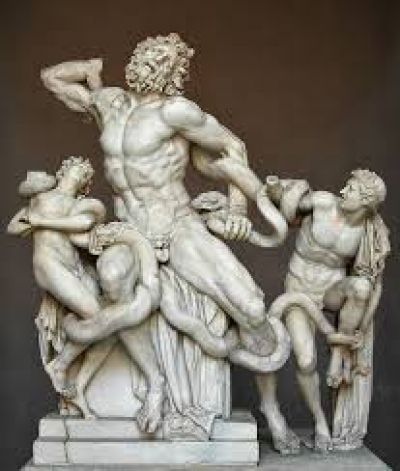A beautiful exhibition recounting the fantastic recovery of Italy’s masterpieces from France is now open in Rome.
Una grande mostra per rievocare l’avventuroso recupero del capolavori italiani dalla Francia. Da Raffaello a Tiziano, dai Carracci a Guido Reni, da Tintoretto a Canova, magnifici capolavori artistici ed archeologici sottratti dai territori italiani tra il 1796 ed il 1814 nel corso delle campagne napoleoniche ed inviati a Parigi per essere esposti nel nascente Museo del Louvre, sono in mostra nelle Scuderie del Quirinale a Roma.
“…e quelle opere immortali ch’erano e saranno sempre nostre dovunque la fortuna le sbalzi ritornate alla patria loro albergano qui fra noi beando gli occhi e gli animi nostri e quasi gridando ci esortano ad emulare quei divini artefici nati da una stessa madre con noi che imitando questa natura e contemplando questo cielo e questi campi e questi colli a se medesimi acquistarono e alla patria mantennero nome e gloria più durevole dei regni e delle nazioni.”
“...and those immortal works that were and always will be ours, wherever fate takes them, having returned to the homeland, they lodge here among us, blessing our eyes and our minds and, almost crying out, urge us to emulate those divine artifices born to the same mother as us, who by imitating this nature and contemplating this sky and these fields and these hills, made a great name for themselves and ensured the longstanding glory of the country among other kingdoms and nations.”
Aptly introduced by this excerpt from the “Discourse of an Italian Concerning Romantic Poetry” written in 1818 by poet Giacomo Leopardi, one of the Italian giants in the European and international literary and cultural landscape, “The Universal Museum. From Napoleon’s Dream to Canova” is a splendid exhibition recounting the fantastic recovery of Italy’s masterpieces from France.
From Raphael to Titian, from the Carraccis and Guido Reni to Tintoretto, masterpieces such as the statue of “Laocoön and His Sons” (also called the “Laocoön Group”), and the “Venere Italica” by Canova (or “Venus” as she is known) will delight viewers until March 12 in the Scuderie del Quirinale in Rome.
Last year marked a crucial anniversary in the history of European civilization and culture in general, and for Italy, in particular. It was in 1816 that the Papal States’ masterpieces of art and archaeology returned to Rome after the Napoleonic confiscations.
This event was preceded and accompanied by various administrations of the peninsula recovering the majority of more than 500 paintings that had been confiscated throughout the Italian territories during the French military campaigns from 1796 to 1814, and packed off to Paris where they were selected for display in the embryonic Musée du Louvre. Two, in particular, among the numerous pieces included in the exhibition, are sure to take any viewer’s breath away. The first is “Laocoon Group,” one of the most famous ancient sculptures since its excavation in Rome in 1506. In July 1798, the statue was taken to France in the wake of the French conquest of Italy and displayed when the new Musée Central des Arts, later the Musée Napoléon, opened at the Louvre in November 1800. The other is Canova’s “Venere Italica,” commissioned in 1804 by Ludovico I, King of Etruria, as a replacement for the ancient “Medici Venus” that had been taken by the French for the Musée Napoleon. This replica, believed to have been purchased from Canova's studio by the third Marques of Londonderry when he was visiting Rome in 1823, remained in Londonderry House, London until 1962 and is the closing “attraction” in the exhibition.
As the works of art that had been taken to France began to return home, Italy was confronted for the first time with the problem of what to do with the thousands of paintings and sculptures that had been removed from churches and convents after the religious orders had been suppressed in the early 19th century. The fate of the Musée du Louvre as a universal museum, the loss of several masterpieces of art left behind in France, but most importantly the massive number of precious paintings finally back home in State ownership, yet unceremoniously stored in improvised warehouses, fueled a lively national debate on the public value of art heritage which fostered the foundation of museums that still number among the country’s leading cultural institutions today. These institutions include the Pinacoteca di Brera in Milan, the Gallerie dell’Accademia in Venice and the Pinacoteca in Bologna.
The Scuderie del Quirinale (also called Papal Stables), the exhibition’s site, was built over a 10 year period between 1722 and 32. Together with the Palazzo del Quirinale, official residence of the President of the Italian Republic, and the Palazzo della Consulta (the Constitutional Court), the Scuderie make up a stunning urban space. At the center of the spacious piazza between these three buildings stands an obelisk atop a fountain with the famous statues of the Dioscuri, the two gigantic Roman marble “Horse Tamers,” Castor and Pollux.
The Scuderie stands next to the Colonna gardens and on top of the archeological remains of the great Roman Temple of Serapide, some of which are still visible.
The imposing building’s structure covers approximately 3,000 sq. mt. over several floors. Wide-open spaces on the second and third floors house the exhibitions.



